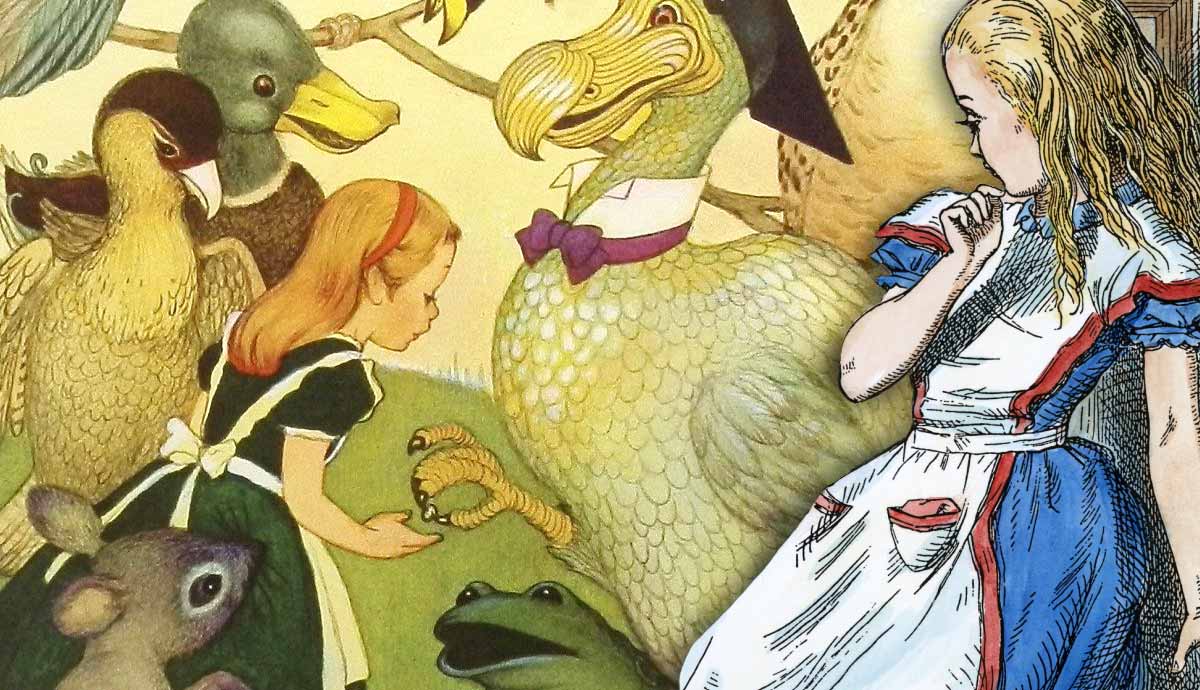Disney
What Symbolizes Alice in Alice in Wonderland?

“The Interpretations of Alice in Alice’s Adventures in Wonderland
Lewis Carroll’s 1865 classic novel, Alice’s Adventures in Wonderland, has captivated readers for over a century. This timeless tale of wonder and whimsy continues to intrigue both young and old audiences alike. While Carroll himself asserted that Alice’s stories ‘do not teach anything at all,’ many readers, both experts and novices, have delved into the book’s colorful characters in search of deeper symbolism and meaning. Among the book’s myriad characters, none has garnered as much attention as the titular heroine, Alice. In this exploration, we delve into some of the potential interpretations and symbolism surrounding the character of Alice.

- The Role of Imagination During the Victorian Era: At the outset of the story, Alice is portrayed as a prim and proper young girl from an affluent English family. She expresses strong opinions and appears to possess a sense of entitlement, largely influenced by her rigid upbringing. However, as she descends deeper into Wonderland’s surreal world, her conventional worldview is disrupted. Characters in Wonderland treat her with rudeness, confusion, or outright disrespect. Alice’s transformative journey in Wonderland can be seen as an allegory for the boundless potential of imagination and creativity when freed from the constraints of Victorian societal norms. The story emphasizes that by shedding preconceived notions of order, one can embrace the chaos of wonderland.
- The Transition from Youth to Adulthood: Alice in Wonderland often explores the theme of transitioning from the innocence of childhood into the bewildering complexities of adolescence and, ultimately, adulthood. The story begins with Alice in a picturesque garden reminiscent of the Biblical Garden of Eden, symbolizing her innocence. As she descends into the rabbit hole, she leaves behind her childhood innocence and embarks on a journey of self-discovery. Throughout her adventures, Alice undergoes dramatic changes in size, reflecting the emotional and physical tumultuousness of growing up. These shifts symbolize the confusion and disorientation experienced by young people during the transition to adulthood. Alice’s encounters with enigmatic characters like the Mad Hatter and the Cheshire Cat mirror a child’s attempt to make sense of the adult world filled with uncertainties.
- Curiosity About the World: Alice’s unwavering curiosity and adventurous spirit drive her desire to explore the bizarre wonders of Wonderland. She willingly engages in a series of surreal and mind-bending experiences, showcasing her open-mindedness. This quality enables her to develop survival skills, self-sufficiency, and the ability to confront formidable figures like the Queen of Hearts. Carroll suggests that we can navigate challenging situations by adopting Alice’s childlike curiosity and open-mindedness, traits that enable her to adapt and thrive in Wonderland’s unpredictable environment.
- The Creation of Life: Unsurprisingly, some readers have interpreted Freudian undertones within Alice in Wonderland, given that Alice is on the threshold of womanhood. The story’s symbolism is open to sexual interpretations, with references ranging from the rabbit hole and the caterpillar to recurring imagery of locks and keys. Scholar William Empson even posits that the entire narrative symbolizes the process of creating life. He describes Alice as transitioning from a ‘father’ when she descends into the hole to a ‘fetus’ at its depths, ultimately needing to become a ‘mother’ by producing her own ‘amniotic fluid’ to be ‘born.’ These interpretations delve into the story’s potential allusions to the journey of maturation, particularly the transition from childhood to womanhood.”
We bring out some of the most well-known Disney collection, all of which are available at reasonable costs. Visit our link now if you are interested in the Disney collection


Merida, Elsa, Anna, Moana, Alice
